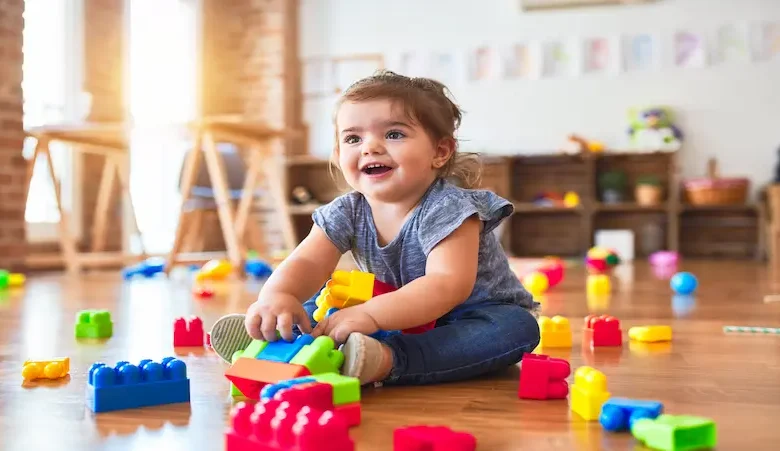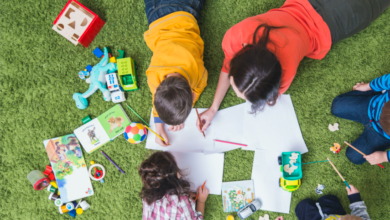Exploring the Best Educational Toys for Child Development

The importance of play in a child’s development cannot be overstated. Educational toys are designed to promote learning through play, enhancing cognitive, social, emotional, and physical skills. In this guide, we will explore the best educational toys for child development, focusing on various age groups and developmental milestones. By choosing the right toys for kids, parents and caregivers can set the foundation for lifelong learning and creativity.
Understanding the Role of Educational Toys
Educational toys serve a significant role in early childhood development. They are not just fun; they are tools that can help children acquire essential skills in various domains. These toys encourage exploration, stimulate imagination, and promote problem-solving abilities. Furthermore, educational toys can enhance fine and gross motor skills and foster social interactions among peers. A well-chosen toy can provide countless opportunities for learning, making the playtime both enjoyable and enriching. Well-known brands like Mattel are often recognized in the educational toy market for offering products that support various stages of a child’s development.
See also: Our Mental Health and Sport Hunting: Where Are the Boundaries of What’s Acceptable?
Age-Appropriate Educational Toys
When selecting educational toys, it is vital to consider the child’s age and developmental stage. Here’s a breakdown of suitable toys for different age groups:
Infants (0-12 months)
For infants, educational toys should focus on sensory development and motor skills. Soft blocks, textured toys, and rattles can stimulate touch and sound, while brightly colored toys can enhance visual tracking. Toys such as play mats with hanging objects can encourage tummy time, promoting strength and coordination. Simple stacking toys help develop hand-eye coordination, while mirrors can engage babies by sparking their curiosity.
Toddlers (1-3 years)
Toddlers are naturally curious and eager to explore their environment. At this stage, educational toys should encourage imaginative play, language development, and basic problem-solving skills. Shape sorters, building blocks, and simple puzzles can effectively promote cognitive skills. Art supplies, such as crayons and finger paints, allow for creative expression and fine motor skill development. Interactive toys that respond to touch or voice can enhance language skills and foster social interaction.
Preschoolers (3-5 years)
Preschoolers are increasingly capable of complex thought processes and social skills. Educational toys for this age group should encourage cooperative play, critical thinking, and imaginative play. Pretend play sets, such as kitchen sets or tool kits, can help children explore different roles and scenarios. Logic games and STEM-based toys, like simple robotics kits, can spark an interest in science and technology. Storybooks and educational apps can also enhance language skills while making learning enjoyable.
Early Elementary (6-8 years)
As children enter elementary school, they develop more sophisticated cognitive abilities and social dynamics. Educational toys for early elementary students should encourage teamwork, logic, and creativity. Building sets like LEGO or K’NEX can foster engineering skills and spatial awareness. Board games that require strategy and cooperation can enhance social skills and critical thinking. Science kits that allow children to conduct simple experiments can ignite a passion for discovery and inquiry.
STEM Toys: The Future of Learning
In recent years, there has been a growing emphasis on STEM (science, technology, engineering, and mathematics) education. Toys that focus on these areas are essential for developing skills that children will need in the 21st century. STEM toys encourage children to think critically, solve problems, and engage with scientific concepts through hands-on activities.
Examples of popular STEM toys include coding robots, construction sets that teach engineering principles, and chemistry kits that allow for safe experiments. These toys not only make learning fun but also prepare children for future educational and career opportunities. By integrating STEM toys into playtime, parents can cultivate a mindset of curiosity and innovation in their children.
Creative Arts and Craft Toys
The arts are an essential aspect of child development, allowing for emotional expression and creativity. Toys that promote artistic skills, such as painting sets, musical instruments, and crafting supplies, can significantly impact a child’s cognitive and emotional growth. Engaging in artistic activities helps children develop fine motor skills, enhances concentration, and encourages self-expression.
Moreover, creative toys can also foster social skills when children engage in group projects or share their creations. Providing children with a variety of art supplies and encouraging them to explore different mediums can cultivate a lifelong appreciation for the arts.
Outdoor Educational Toys
Playtime doesn’t have to be confined indoors. Outdoor educational toys can promote physical activity, social interaction, and exploration of the natural world. Items like balance bikes, climbing structures, and sports equipment enhance gross motor skills and encourage teamwork. Nature exploration kits, including magnifying glasses and bug catchers, can ignite a love for science and nature.
Encouraging outdoor play is crucial, as it can lead to improved physical health, increased attention span, and enhanced creativity. Parents should make a conscious effort to provide a variety of outdoor educational toys to inspire active and inquisitive play.
Choosing the Right Educational Toy
Selecting the right educational toy can be challenging given the vast array of options available. Here are some tips to guide your choice:
1. Age Appropriateness: Always consider the age recommendations on the toy packaging to ensure it aligns with your child’s developmental stage.
2. Safety: Check for safety certifications and avoid toys with small parts that could pose a choking hazard.
3. Multi-functionality: Look for toys that can be used in various ways, encouraging creativity and prolonged interest.
4. Engagement: Choose toys that stimulate your child’s curiosity and invite them to play, learn, and explore.
5. Quality over Quantity: Invest in a few high-quality educational toys rather than a large number of cheaper options.
Incorporating educational toys into playtime can significantly enhance a child’s development across multiple domains. By choosing the best educational toys for each stage of growth, parents can create a stimulating environment that promotes learning through play. This investment not only enriches their child’s early years but also lays the groundwork for a bright future filled with curiosity and discovery.



